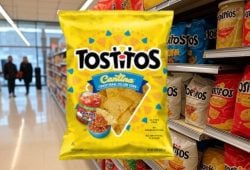Influencer marketing in the United States has grown exponentially over the past decade, transitioning from a niche strategy to an essential part of many brands’ digital presence. In 2023, influencer ad spending in the U.S. reached approximately $8.1 billion, and this figure is projected to continue growing at a CAGR of 10.5% through 2028. This expansion reflects how brands reach their audiences and a transformation in influencers’ role in consumer engagement and brand loyalty.
Influencers as Key Voices in the Market
In recent years, influencers have evolved from mere brand promoters to integral components of consumer journeys. Unlike traditional advertising, influencer marketing connects the audience and the influencer, translating into authentic brand relationships. Brands increasingly lean towards long-term partnerships over one-off collaborations, recognizing the credibility influencers bring when they align with a brand consistently.
This shift is partly due to consumer demand for authenticity. As of 2023, over 5.2 billion social media users worldwide are tuned into influencers on platforms like Instagram, YouTube, and TikTok, where they engage with brand-related content in ways that feel less like advertising and more like trusted recommendations. Brands have noticed that the personal touch of influencers often leads to higher engagement, with reports showing that influencer content can generate up to 11 times more ROI than other forms of digital advertising.
Influencer Marketing in the US
While influencers with millions of followers were once the preferred choice for brand partnerships, micro-influencers with 10,000 to 50,000 followers have become the new power players. With up to 3.5% engagement rates on Instagram, these influencers offer brands an effective way to connect with niche audiences. Micro-influencers’ closer relationships with their followers result in higher engagement rates, which makes their endorsements appear more genuine and credible.
For instance, engagement rates on Instagram show that micro-influencers in the beauty and skincare sector achieve an impressive average of 2.8% to 3.5%, whereas mega-influencers (those with over one million followers) often struggle to reach even 2%. This success is mainly due to the trust that micro-influencers build with their audience, allowing them to deliver messages that feel more like personal endorsements than paid advertisements.
The Financial Impact: Where Brands Spend and Why
In 2023, the average ad spending per social media user in the influencer market was approximately $5.8 in the U.S. Most spending went to Instagram, which remains the dominant platform for influencer campaigns. TikTok, however, is rapidly gaining ground as younger demographics flock to the platform for its authenticity-focused content. The cost per post varies significantly by platform and influencer tier. Still, on average, a micro-influencer can command between $50 to $110 per Instagram post, whereas macro-influencers (100,000–1 million followers) may charge $350 to $2,500(according to information from Statista.
With mobile devices driving 82% of influencer ad spending, brands are adapting to how users consume content. Mobile-optimized influencer content, often in short-form video or story format, is most effective for engaging today’s audience, which spends an average of 2 hours and 22 minutes daily on social media.
Authenticity and Transparency: The Driving Forces of Influence
In an age of digital skepticism, transparency and authenticity are not just desirable; they’re essential. According to recent studies, 64% of U.S. consumers trust brands more when influencers disclose paid partnerships, and 70% say they are more likely to buy a product when they feel the endorsement is authentic. This has led brands to seek influencers who are selective about their partnerships and demonstrate a genuine connection to the products they promote.
Brands now focus on transparent practices, ensuring that partnerships are disclosed clearly to avoid misleading audiences. Influencers who approach their audience honestly and disclose sponsorships build stronger bonds of trust, enhancing the brand’s reputation and the influencer’s standing within their community. For example, nano- and micro-influencers, due to their highly engaged audiences, often see success with honest, experience-based content that resonates on a personal level.
The Shifting Role of Influencers in Brand Strategy
Today, influencers play a pivotal role in brand strategy. Rather than functioning solely as campaign spokespeople, influencers are increasingly seen as brand advocates and partners. This shift has been driven by brands that recognize the value of deeper partnerships, moving beyond traditional endorsement to include influencers in product development, content creation, and brand storytelling.
In the beauty sector, for example, some brands involve influencers directly in product ideation, giving them the chance to contribute ideas based on their experience and audience feedback. This collaborative approach allows brands to tailor products to current trends and user needs. At the same time, influencers gain additional credibility with their followers by offering input on products that reflect their tastes and values.
What the Future Holds for Influencer Marketing
As influencer marketing grows, its importance in digital advertising will only deepen. The U.S. influencer advertising market, valued at $8.1 billion, is expected to climb to $16.8 billion by 2028, with annual growth primarily driven by the rise of micro- and nano-influencers. This surge reflects a strong response to the high ROI influencer campaigns bring and a recognition that influencers serve as cultural touchpoints for various demographic groups.
Looking ahead, the focus on authenticity and transparency will likely remain central. Influencers who prioritize transparent communication and long-term brand partnerships will see the greatest success as these factors drive more robust, more trustworthy connections with their audiences. For brands, this means selecting influencers whose values align with their own, creating a seamless synergy that resonates on a deeper level with consumers.
Conclusion
Influencer marketing in the United States has evolved from a tactic to a strategy, shaping how brands communicate and engage with their audiences. Micro- and nano-influencers are now the engines driving high engagement, with brands recognizing the value in smaller, more engaged communities over vast followings. As authenticity and transparency drive consumer trust, influencers will be expected to act as honest advocates rather than paid promoters, with brands shifting to a partnership-focused model that reflects shared values and mutual goals.
The numbers show a clear upward trend: influencer marketing isn’t just here to stay; it’s set to become a cornerstone of brand strategy in the coming years. With ad spending projected to double by 2028, brands that embrace this authentic, audience-centered approach will find themselves well-positioned to engage the next generation of consumers.









